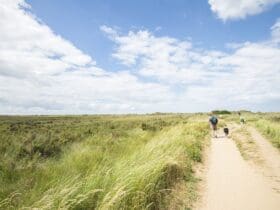Kepak is planting 1,000 trees across three-acres at its Merthyr site in Wales, in support of the leading food company’s ambitious sustainability goals.
The indigenous trees, which include Elm, Birch, and Hazel, have been specifically chosen to enhance biodiversity and carbon sequestration, and are well suited to the site which experiences high winds and low temperatures.
This initiative will add to Kepak Merthyr’s strong sustainability credentials as the site already runs on all green energy sources, including fully renewable electricity.
The site is also home to a wind turbine, which delivered 1,726,354kWh in wind electricity last year, providing enough energy to power a large estate of approximately 400 households for 12 months. Kepak is planning to install another wind turbine at its Merthyr site this year to further increase wind energy generated by the site.
Paul Hughes, Site Director of Kepak Merthyr said: “This is a very exciting community initiative for us. Environmental issues are extremely important to us at Kepak, while the local community in Merthyr also believes in and deeply cares about sustainability. We have already made significant changes to become a more sustainable business and the planting of 1,000 trees around our Merthyr site is further proof of our commitment in this regard. We want to continue to make a positive impact in the communities in which we operate. Facilitating the planting of this number of native trees will have many positive long-term effects, including absorbing carbon dioxide, improving air quality, improving soils, and enhancing biodiversity.”
Furthermore, Kepak Merthyr is also actively participating in an innovative sustainability research initiative in conjunction with the Irish Research Council and Trinity College Dublin, aimed at protecting, enhancing, and promoting biodiversity around the Welsh site.
As part of the initiative, Kepak has designated ‘biodiversity champions’ at site level who act as ‘citizen scientists’ to conduct and monitor biodiversity. At Kepak Merthyr, citizen scientist Stuart Houghton has established treatment plots in short and long grass meadows, and wildflower and herb beds are being established in the green areas surrounding the plant.









Leave a Reply
View Comments